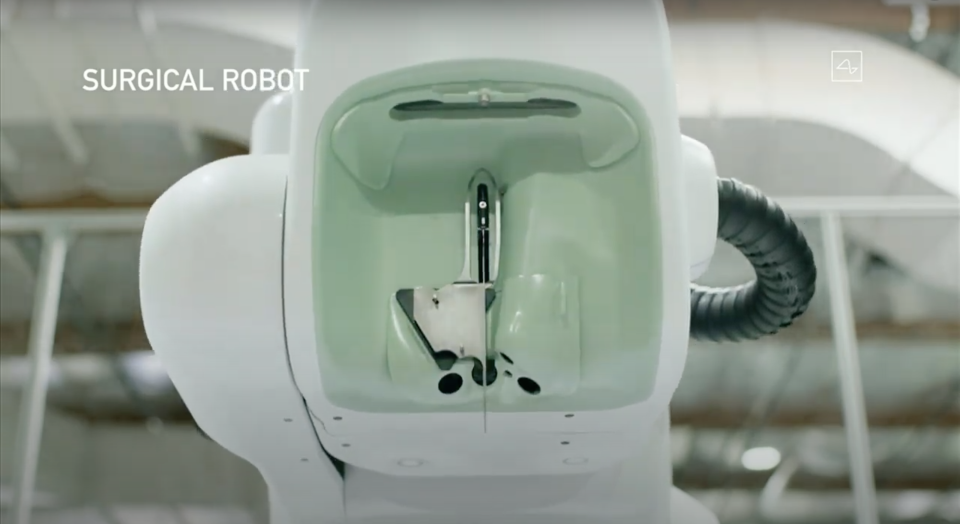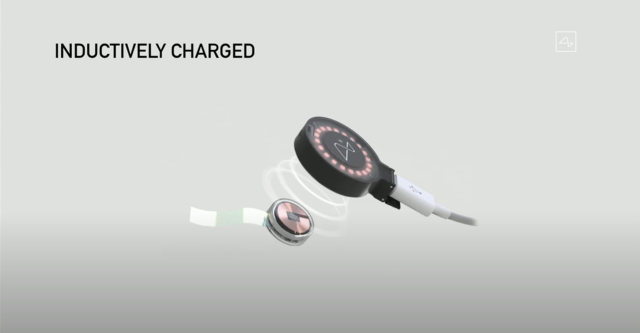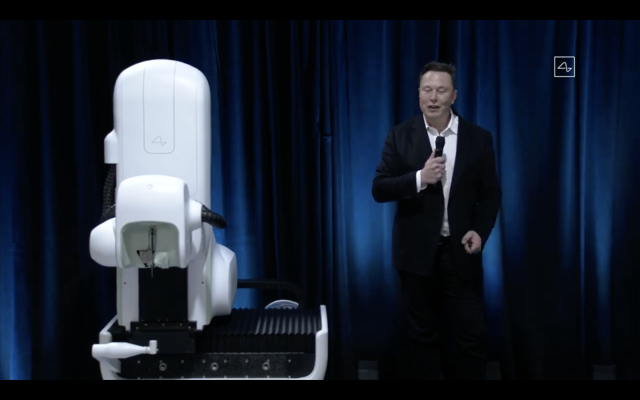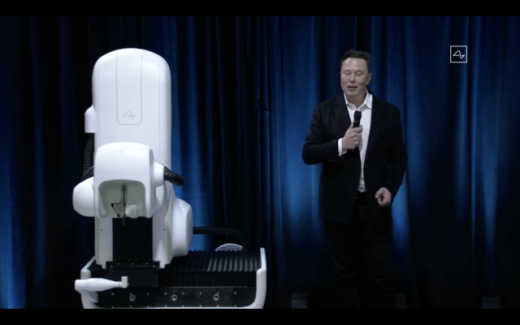Elon Musk unveils V2 of the Neuralink brain-machine interface surgery bot

Just over a year since their last major announcement, Elon Musk’s Neuralink is finally ready to show off the fruits of its labor: a revolutionary brain-machine interface that could blur the lines between humanity and technology, as well as give our feeble fleshy minds a leg up against increasingly capable AIs.
“It’s important that Neuralink solves this problem sooner rather than later, because the point at which we have digital superintelligence, that’s when we pass the singularity and things become just very uncertain,” Musk told Inverse in 2019.
Musk took to the stage at the Neuralink headquarters on Friday afternoon to reveal a working “V2” prototype of the automated surgical system that the company debuted last year. This machine will “sew” as many as 1,024 impossibly thin 5 micron-wide electrodes into a person’s brain. So far the system only taps into the brain’s cortical surface but the company hopes to eventually insert them deeper into the grey matter to monitor deeper brain functions (ie the hypothalamus). These electrodes will connect to Neuralink’s “Link 0.9” chip, a 23mm x 8mm sealed unit which plugs into a small hole bored into the patient’s skull and collects the signals that the electrodes pick up. The Link will measure the patient’s temperature, pressure and movement, potentially providing early warnings about imminent heart attacks or stroke, Musk said.

The Link will fit flush in the skull and transmit data wirelessly at megabit speeds up to 10 meters. It will also reportedly offer inductive charging and a full day’s battery life, enabling users to recharge it as they sleep. The small pod worn behind the ear that the company showed last summer has since been removed in favor of the all-in-one design we see today. The entire installation process will reportedly take a little under an hour to complete. “It’s like a Fitbit in your skull,” Musk noted during the event.
During the live demonstration, Musk introduced the crowd to a trio of pigs: Joyce, Gertrude and Dorothy. Joyce has not had the implantation surgery and appeared to be a perfectly happy and healthy pig. Dorothy had the surgery but had the implant subsequently removed to illustrate that the Link device is not a permanent attachment but rather can be installed and removed at will should the patient want to upgrade the hardware. Finally, Gertrude had the surgery and still has the link installed in her head. Her link monitors signals generated from her snout so whenever Gertrude smells something tastey, the Link picked up and recorded those signals.

To date, no human trials have been completed though the Neuralink team has managed to implant as many as 1,500 electrodes into mice. The chip has been tested on primates as well. “a monkey has been able to control a computer with its brain,” Musk told Bloomberg in July. Human trials could begin as soon as this year.
Of course there’s no guarantee that this system will work in humans in the same manner that it did with the mouse and primate models. If it does prove successful, Neuralink hopes to first leverage the technology to assist amputees and help people regain their lost senses of sight or hearing — even treat degenerative diseases. Eventually the company hopes to “upgrade” human consciousness, enabling us to communicate with machines at the speed of thought. Musk even positied that we could one day use these devices to save and replay memories, even download our consciousnesses to robotic bodies, Altered Carbon-style. How any of this would actually work in practice remains to be seen. There is no word yet on how much the system would actually cost, though Musk estimates it will eventually retail for around the same amount as a LASIK vision correction procedure.
This is far from the first time that we’ve tried to communicate directly with machines. Research into brain-machine interfaces has been going on since the 1920s. We’ve developed BMIs that help paraplegics walk, help amputees move their prosthetic limbs or regain their sense of touch, or help stroke patients recover and locked-in syndrome communicate.
Musk’s moment in the neurological spotlight may be short-lived however. A number of research organizations and universities are already developing systems of their own. Heck, even DARPA is looking into the technology. That said, Musk did confirm that the US Food and Drug Administration granted approval for “breakthrough device” testing back in July.
(31)



